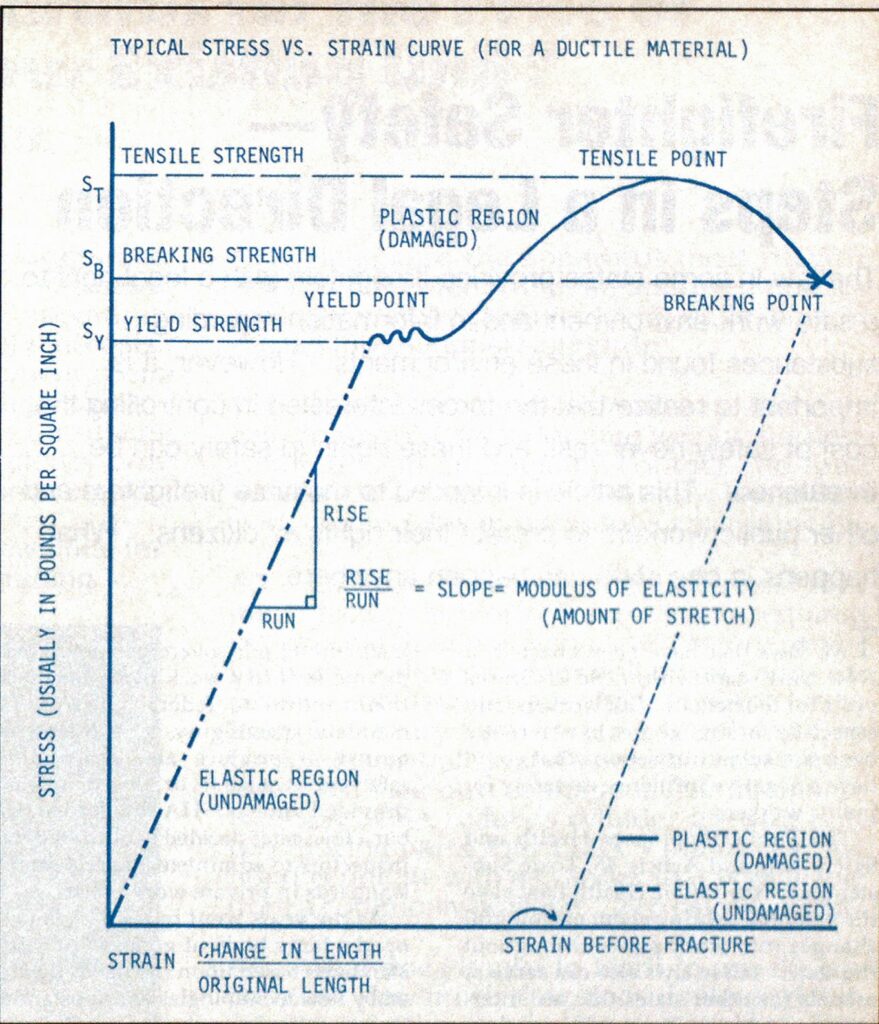
LETTERS
Regarding Rope…
As a fire protection engineering student currently studying at the New Jersey Institute of Technology, I would like to comment on your article regarding rope techniques, “Figure-Eight Knot Holds Up In Rescue Service Applications,” in October 1983.
The author inaccurately defines a rope’s tensile strength as “the amount of force needed to break the rope.” Strength is a measure of force applied over a unit area (also called a stress) and is usually expressed in terms of pounds per square inch (psi). Tensile strength, then, is the maximum amount of stress that can be applied to the rope. Note that this is not the breaking strength.
As stress is applied to a material such as a rope, the material undergoes a strain (a change in length divided by the original length). If the stress does not exceed the materials yield point there will be no permanent damage done and, as the stress is removed the rope will return to its original length. This is called an elastic strain (a reversible deformation). If however, the applied stress exceeds the rope’s yield strength, permanent plastic strain, an irreversible deformation occurs and the rope is damaged and should be removed from all lifesaving services. As the stress is increased even more past the yield point, the tensile strength will be reached. Note that the rope will not break at the tensile point. After the tensile point is reached it becomes increasingly easier to strain the rope and, the rope will eventually fracture at the breaking point as the rope cannot deform (stretch) any more.
An important point to note is that a rope’s tensile strength is reached only after it has undergone an irreversible plastic strain and thus is damaged beyond repair. One must also understand that rope is rated not only on its tensile strength but also on two other important parameters, its modulus of elasticity which is a ratio of its stress to its strain (or simply its amount of stretch), and its yield strength. The yield strength is a very useful specification to consider since it points to where the rope just begins to irreversibly strain or damage. By using a rope’s yield point and modulus of elasticity we can more accurately specify a certain rope for various services.
We must understand the various properties of rope to accurately inspect and approve rope for various services. Rope mechanics is too important a part of our fire and rescue service to misunderstand.

Robert Malanga
Newark Fire Department
Rope on Rope
In the October 1983 issue of FIRE ENGINEERING, the article entitled “Emergency Descent Devices” was very informative. Loading the figure-eight for different weights has its merits, but for only a 25 lb. difference, is it accomplishing what we want?
The four different ways diagramed in the article makes for a complex task of rigging and remembering. We found that the standard wrap on the figure-eight works very well up to 200 lbs., and the double wrap on the figure-eight to 350 lbs. The double wrap on the figure-eight affords enough control that a novice descending can literally walk down the wall.
The drawing shows the figureeight wrapped with the rope pulled over the rope. This tends to cause excess wear, because the rope is moving across each other. The drawing for 200 lbs. shows the rope over rope and fed through the carabiner on the gate side. The gate is the weakest point in the carabiner. If this method is used, it would be better to feed the rope on the strongest point of the carabiner, the major axis, as shown below.

Keep up the good work of bringing information to the fire service.
Leo O’Campo
Coordinator, Special Programs
Texas A&M University System

